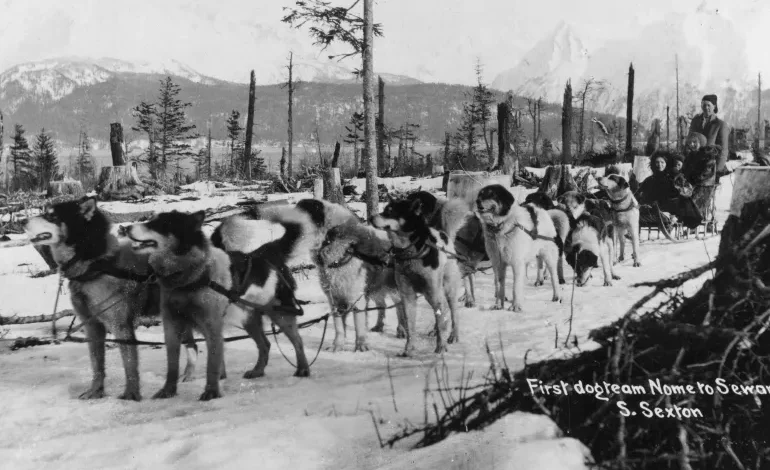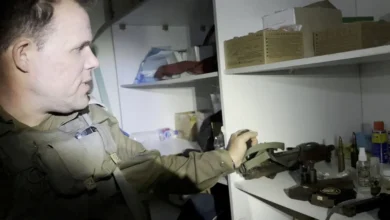The Alaskan hero dogs who prevented a diphtheria epidemic in 1925

When Dr Curtis Welch checked on a very sick three-year-old patient who had been admitted to his tiny hospital on January 20, 1925, his worst fears were realised. A thick, slimy membrane had appeared on the toddler, Billy Barnett’s tonsils and there were reddish lesions in his mouth. The rise in tonsillitis cases in Nome, Alaska – some of them fatal – already had Welch worried. But Barnett’s disturbing new symptoms confirmed the doctor’s suspicions.
It could only be diphtheria, an ancient and gruesome bacteria which suffocated its victims by infesting their windpipes with mucus.Fortunately, there was a cure. In the 1890s, Emil von Behring – the very first winner of the Nobel Prize for medicine – had developed an antitoxin using serum obtained from immune animals. Unfortunately, Welch only had a few vials of expired antitoxin and Nome would be largely cut off from the rest of the world till the Alaskan summer, when the sea ice surrounding the ex-mining town thawed for a few brief months.
Welch knew he could not wait that long, and on January 22, with the approval of the town council, he sent an urgent telegram to the United States Public Health Service in Washington, DC. A diphtheria epidemic was “almost inevitable” if he did not receive one million units of antitoxin as soon as possible. “Mail is only form of transportation,” he wrote, in reference to the dog team relay which enabled a year-round postal service to Nome.
The events of the next month would put Nome – and the newly acquired state of Alaska – on the front page of most leading newspapers around the world. Advances in technology allowed readers to follow the plight of the town’s 3,000 residents in almost real time. But – despite the protestations of a few budding airmen – there was nothing modern about the way the town was saved.
While Welch and his chief nurse, Sister Emily Morgan, dealt with the rise of cases as best they could (imposing a quarantine, employing age-old remedies and only using their limited antitoxin supplies in extreme circumstances), people near and far scrambled to answer their cry for help.
While medical staff all over the country searched hospital inventories for supplies of antitoxin, officials debated how to get them to Nome. Before any antitoxin had even been located, Mark Summers – a Nome town councillor and the superintendent of the Hammond Consolidated Gold Fields – had come up with a plan to get the serum 1,085km (674 miles) from Nenana (the end of the railway line) to Nome.
Dog or plane?
Summers believed that “the entire route could be covered by two fast dogsled teams” – one heading west from Nenana and the other starting at Nome and travelling east to pick up the relay partway, write Gay and Laney Salisbury in The Cruellest Miles: The Heroic Story of Dogs and Men in a Race Against an Epidemic. And Summers knew the one man who could complete the treacherous western leg of the journey, from Nome to Nulato and back again. The legendary Norwegian musher (the leader of a team of dogs) – Leonhard Seppala, who, together with his trusty lead dog Togo, had won multiple dog races and toppled several long-distance records – just happened to work for Summers.
While most in the council voted in favour of Summers’s plan, Mayor George Maynard urged them to consider a second option: flying in the serum. While this would be quicker if all went according to plan, the “board members were openly skeptical” of the chances of an open-cockpit plane making it all the way to Nome, write the Salisburys. Alaska’s first winter flight had been completed the previous year only – over a much shorter distance and in far warmer weather.
After the meeting, Summers visited Seppala to ask him to prepare for the adventure of a lifetime. Maynard, meanwhile, set about persuading the powers-that-be to consider a mercy flight.
While all this had been going on, the chief surgeon of the Anchorage Railroad Hospital located 300,000 units of serum in Alaska itself. At about the same time, a further 1.1 million units were cobbled together from various hospitals on the West Coast of the mainland US.
The drugs Welch needed had been found. But the situation in Nome was worsening by the day. By January 24, Welch and Morgan had counted 20 confirmed cases and a further 50 suspected ones. Another complication was the weather. “A continental high-pressure system had pushed temperatures in the interior to their lowest levels in 20 years,” according to the Salisburys.Mayor Maynard found plenty of support for his aeroplane idea. Dan Sutherland, Alaska’s representative in Congress, had been working to bring aviation to the state for years and in Nome’s crisis he sensed an opportunity.
Sutherland leaned on William Fentress Thompson, the longtime editor of the Fairbanks Daily News-Miner in Fairbanks, close to Nenana, and the founder of the Fairbanks Airplane Corporation, one of the pioneers of Alaskan aviation. Finding a plane, a rickety one, was no problem for Thompson, and – with his regular aviators out of town – he also managed to source a willing pilot: Detective Roy Darling, a Justice Department official who had hung up his flying goggles after suffering permanent injuries in a plane crash six years before.
Thompson abandoned all objectivity when he penned the paper’s lead story on January 26: “The atmosphere is not right for flying, no flier would bet on such days as these … EVERYTHING is against the game, yet the emergency undoubtedly exists, and Fairbanks [is] in the eyes of the Flying World, and Nome is our neighbour and our pal. What you goin’ to do? The answer is GO.”
Maynard, Sutherland and Thompson had made a compelling argument for flying the serum in. But the final decision would be made by one man only: Alaska’s Governor Scott C Bone. Bone was passionate about the potential of aviation to transform Alaska’s fortunes and he wanted to say yes to the airmen. But he was also a practical man who understood that getting the serum safely to Nome was the top priority.
After weighing all the factors – the weather and the state of both plane and pilot – he made his choice. Flying the serum in was definitely the more glamorous and exciting choice. But Bone decreed that the first 300,000 units would travel to Nome by dog sledge. As the Salisburys write: “At a time when American innovation and ingenuity were changing the world with production lines and radio communication, Bone had put his faith in the folk wisdom of Alaska’s natives.”










